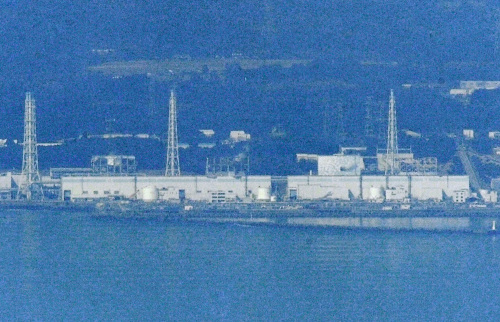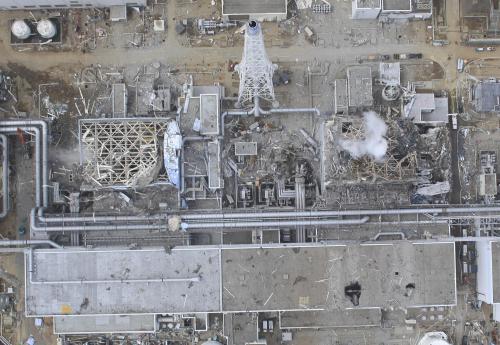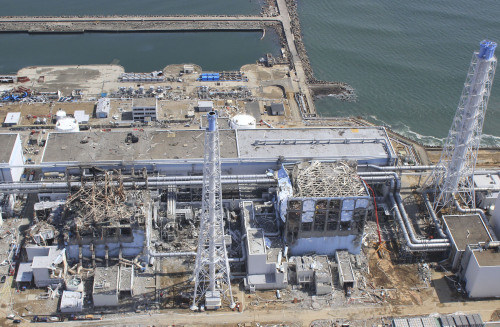TOKYO (AP) _ Seawater outside the hobbled nuclear power plant in northeastern Japan was found to contain 3,335 times the usual amount of radioactive iodine _ the highest rate yet and a sign that more contaminated water was making its way into the ocean, officials said Wednesday.
The amount of iodine-131 found offshore some 300 yards (meters) south of the coastal Fukushima Dai-ichi power plant does not pose an immediate threat to human health but was a ``concern,'' said Hidehiko Nishiyama, a Nuclear and Industrial Safety Agency official.
He said there was no fishing in the area.
``We will nail down the cause, and will do our utmost to prevent it from rising further,'' Nishiyama said.
The power plant has been leaking radiation since a March 11 tsunami slammed into Japan's northeast, knocking out power and backup systems crucial to keeping temperatures down inside the plant's reactors.
Residents within 12 miles (20 kilometers) have been evacuated, while those up to 19 miles (30 kilometers) have been urged to leave as radiation has made its way into vegetables, raw milk and water.
Last week, tap water as far away as Tokyo, 140 miles (220 kilometers) to the south, contained levels of cancer-causing iodine-131 considered unsafe for infants.
 |
Only Unit 2 is covered with white concrete housing, seen on left of an iron tower on right, at the stricken Fukushima Dai-ichi nuclear power plant in Okumamachi, Fukushima prefecture, Japan, on Tuesday, March 29, 2011. Other three units, Unit 1 on right of the tower, Unit 4 and Unit 3, on left and right respectively of another iron tower at second from left among the three pylons, stand with only iron frames. Workers have discovered new pools of radioactive water leaking from the nuclear complex that officials believe are behind soaring levels of radiation spreading to soil and seawater. (AP-Yonhap) |
 |
In this March 20, 2011 aerial photo taken by small unmanned drone and released by AIR PHOTO SERVICE, damaged Unit 4, left, and Unit 3 of the crippled Fukushima Dai-ichi nuclear power plant are seen in Okumamachi, Fukushima prefecture, northern Japan. (AP-Yonhap) |
 |
(AP-Yonhap) |







![[Today’s K-pop] Blackpink’s Jennie, Lisa invited to Coachella as solo acts](http://res.heraldm.com/phpwas/restmb_idxmake.php?idx=644&simg=/content/image/2024/11/21/20241121050099_0.jpg)